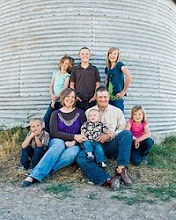I recently watched a report by Brian Ross on ABC’s Nightline. The report was about where milk really comes from, and featured video footage from an “Undercover Investigator” at a large “Factory Farm” in New York. As a dairyman watching this report I quickly realized that this was not an investigative report as had been advertized but was simply a propaganda piece by radical Animal rights groups(Mercy for Animals and HSUS). The video of the cows that was shown was not taken by ABC, rather it was shot by the “Undercover Investigator” who certainly had his agenda to prove. I began wondering if some of the clips were staged to enhance the shock value. For instance, I know of no one who docks tails in the manner shown in the report, all the dairies that I know use rubber bands that cut off circulation and then the tail just falls off after a few days. There seems to be very little pain and no blood involved with this method. (Not very shocking).
While I immediately saw this report for what it truly is, I realized that people unfamiliar with modern dairies would likely believe the fallacy of the report and believe that cows are abused and mistreated by dairy farmers, this could not be farther from the truth. In an attempt to counter the claims in the Nightline report I will attempt to compare cows to people, only because the term “Humane” is used so frequently to describe the way farm animals should be treated, although they are not human and should not be confused as such.
The cows in the report were shown standing in a crowded holding pen with no room to move, the assumption was made that cows are kept in this condition all day, every day, when in reality those cows were there only for a few minutes while waiting for their turn to go into the barn to be milked. This is much like stepping into a crowded elevator or crowded subway car, we would not want to be there all day, but we tolerate it long enough to get where we are going. After being milked all the cows returned to their pen where they have access to fresh feed, water and a dry comfortable stall to lay down in(not shown in the report).
During stormy weather people like to be inside where it is warm and dry, these cows have a warm dry barn to protect them from stormy weather. Likewise, when it is hot outside people like to stay inside an air-conditioned building, these cows have a shaded barn with fans and misters to keep them cool and comfortable.
These cows have their home cleaned at least once, probably twice a day. I know the report shows cows in several inches a manure, however since no reasonable explanation was given, I will assume that the corrals were in the process of being cleaned, the manure had been pushed to one end of the coral but had not yet been pushed all the way out of the coral (video footage being taken out of context for shock value). Some cows seek out dirty spots to lie in and seem to be able to find one regardless of the care taken to prevent it. We all know people whose personal hygiene is less than perfect; these people are the exception not the rule.
These cows have their beds made for them at least daily (raked out with clean fresh bedding applied as needed).
Every day these cows are fed a diet that is specially formulated to meet their nutritional requirements. This diet is formulated by a trained professional dairy nutritionist in order to provide the best health and comfort to the cow. These cows are also provided with all the fresh clean water they can drink (water being the beverage of choice for cows).
I hope you are beginning to see that these cows may be treated more “Humanely” than a lot of people. They are also provided with a pedicurist (Hoof trimmer) and a doctor (Veterinarian) when ever needed without having to worry about paying the bill.
There seems to be much concern about the pain involved with certain management practices such as dehorning. While there is some pain involved with dehorning the animals are better off without their horns. People undergo medical procedures that are painful knowing that it is for their own good. Who enjoys having their wisdom teeth pulled, it is painful and can cause discomfort for several days, yet we still pull wisdom teeth. Similarly we must dehorn calves for their own good. Dehorning methods have improved greatly over the years, we used to take a saw and cut the horns off (talk about a bloody mess). Today we simply burn them for a few seconds while the horns are still very small.
I know of no one who docks tails in the manner shown in the report, all the dairies that I know use rubber bands that cut of circulation and then the tail just falls off after a few days. There seems to be very little pain and no blood involved with this method.
The report concludes with an attack on the ethics of America’s dairy farmers. I would say the ethics are with the people who get up early every morning 365 days of the years (weekends and holidays included) to place the care and well being of their cows above their own comfort and often that of their family. America’s dairy farmers take pride in caring for our animals and producing a safe wholesome product for you and your family. In the future if people have questions about farming don’t ask ABC –ask a farmer. For more information on animal care go to www.conversationsonanimalcare.org.
